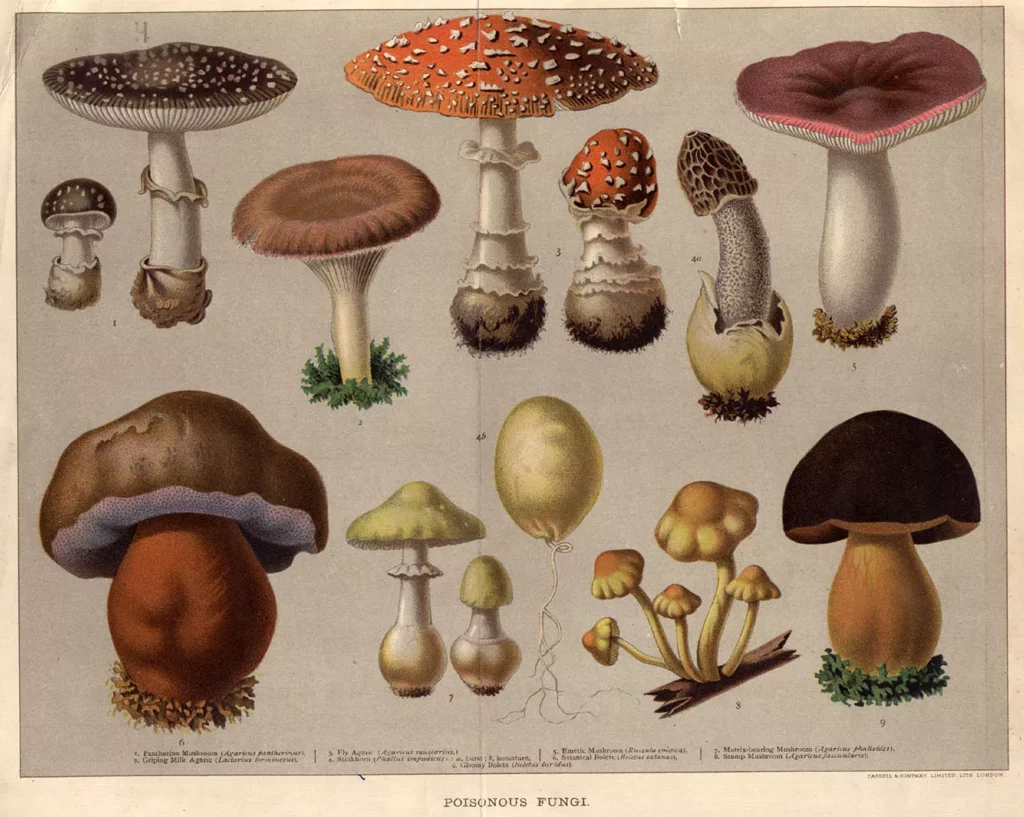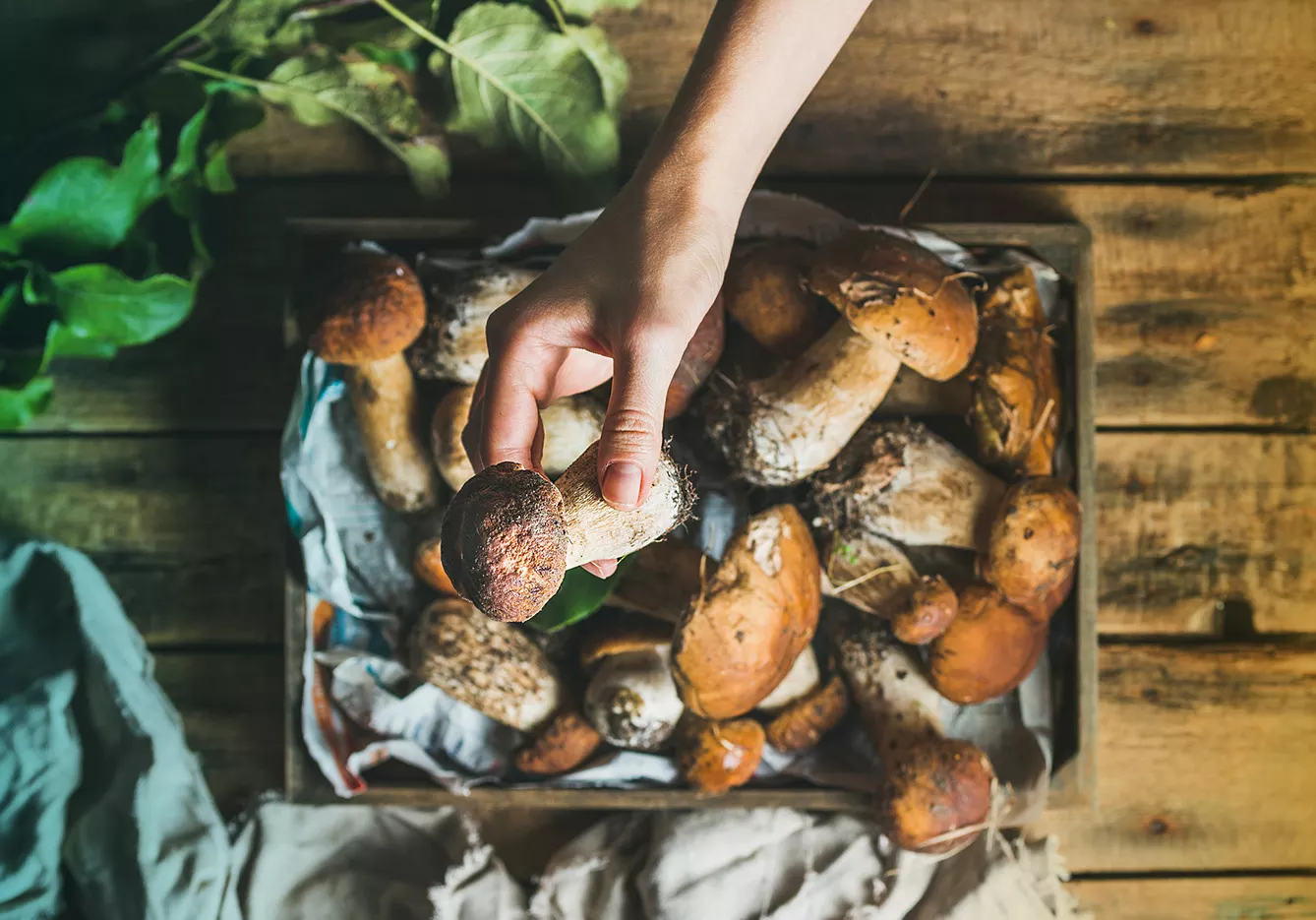Darz bór! A rather ancient Polish greeting that is still very much alive among the hunters and foresters. It literally means: may the forest provide, and so it was – the great woods was the place which so often provided people not only with meat (venison) but also wood, berries, and mushrooms. The last two are still important ingredients in Polish cuisine. That’s why the mushroom picking season is so celebrated.
There would be no Christmas Eve dinner without cabbage with mushrooms, mushroom soup, mushroom and cabbage dumplings, or mushroom borscht. No wintery delights such as croquettes with mushrooms and cabbage. The list goes on. All of the above are not exquisite dishes that the nobles would eat. On the contrary – mushrooms were a relatively common ingredient in traditional Polish dishes. All thanks to their availability.
Poland is still today the country that is praised for the way it looks after its forests. Currently, forests cover 30% of Poland’s surface, and the aim is to increase that to 33% by 2050. Polish forests are home to 65% of its flora, fauna, and fungi species. No wonder the tradition of mushroom (and berry) picking is something Poles can still enjoy.
Mushroom picking in Poland: horn of plenty
Mushroom picking is a long-standing tradition. Perhaps today, not many Poles give it a second thought when they grab their baskets, knives, and thick-repellant sprays, and off they go to the forest to hunt for some koźlaki or podgrzybki. But the truth is their ancestors took mushroom picking very seriously. So seriously that even the great poet, Adam Mickiewicz, decided to dedicate a fragment of his Epos – Pan Tadeusz – to this tradition. (Coming to think of it – Mickiewicz seems to have been adamant about preserving the intangible cultural assets long before it was considered the right thing to do).
Among the nobles, mushroom picking was more of a game, the winner of which was able to take the seat during the meal that followed next to the fairest maid or the most handsome gentleman. For the lower classes, it was a serious task to collect enough supplies to last through the winter. Mushrooms would be marinated or dried and added to improve the flavor of winter dishes.
Since the “window of opportunity” for collecting mushrooms is very narrow (summer and early autumn), there is no time to waste. Tiring as it may be, it is a lovely pastime and a chance to spend some quality time with nature. Hardcore pickers have their own spots where they know they can find the most special kinds of sylvan treasure. And trust me – they won’t share it even at the point of their mushroom swiss-army knife!

The devil is in the details
As always, there are some rules one should remember when they decide to go for a mushroom hunt. Firstly the right equipment and clothing. Good, walking shoes, clothes that cover your body well, and something on your head (nobles used straw hats, but probably mostly for fun. These days, it is important to keep the ticks away as much as possible.) You will need a basket (a natural wicker basket is best. If the weather is hot, your findings won’t get soggy) and a knife.
When you find a mushroom, it is best to cut it gently out at the bottom. Once out, cover the hole in the undergrowth with the soil. That way, you will protect the mushroom spawn and increase the chances of the regrowth of the mushroom in the next season. Be mindful of where you are going. Don’t act loudly and disturb the animals – it is their home. But above all, the crown rule is: if you are unsure if the mushroom you found is edible – leave it!
The amount of unedible mushrooms is much greater than of the tasty, edible ones. Worst of all – some of them can kill you. And as it usually is with serial killers – they are disguised very well. Muchomor sromotnikowy is similar to a delicious kania, while the borowik szlachetny can be tragically mistaken with the borowik szatański, its name commonly shortened to simply the devil. But which one is the tastiest? I bet most Poles would point to kurka [hen], as it is commonly (and cutely) called in Polish, so the little, golden chanterelle, hiding buried in green moss. Last forest savoir-vivre tip? Leave it as you have found it. Take your rubbish with you. And don’t kick the mushrooms you can tell are not good for human consumption. Animals also use the forest and don’t need humans to trash it.
The sky is the limit for mushroom picking
Picking mushrooms in Poland is entirely legal. There is no need for any permissions or limits as per quantities you can pick. This explains why it is still such a popular way of spending time and… why it gives a natural boost to the bank accounts of the locals.
Next time you are in Poland in the berry/mushroom picking season, you might encounter people standing by the roads with baskets of freshly picked forest goods. It is a common way for the locals to earn some extra money.
Buying them off a complete stranger does not pose any risk when it comes to forest berries. With mushrooms, however, you should be more careful. Most locals know their mushrooms very well, but… the devil is in the details! Before purchasing, it is best to be sure you can spot them yourself.







